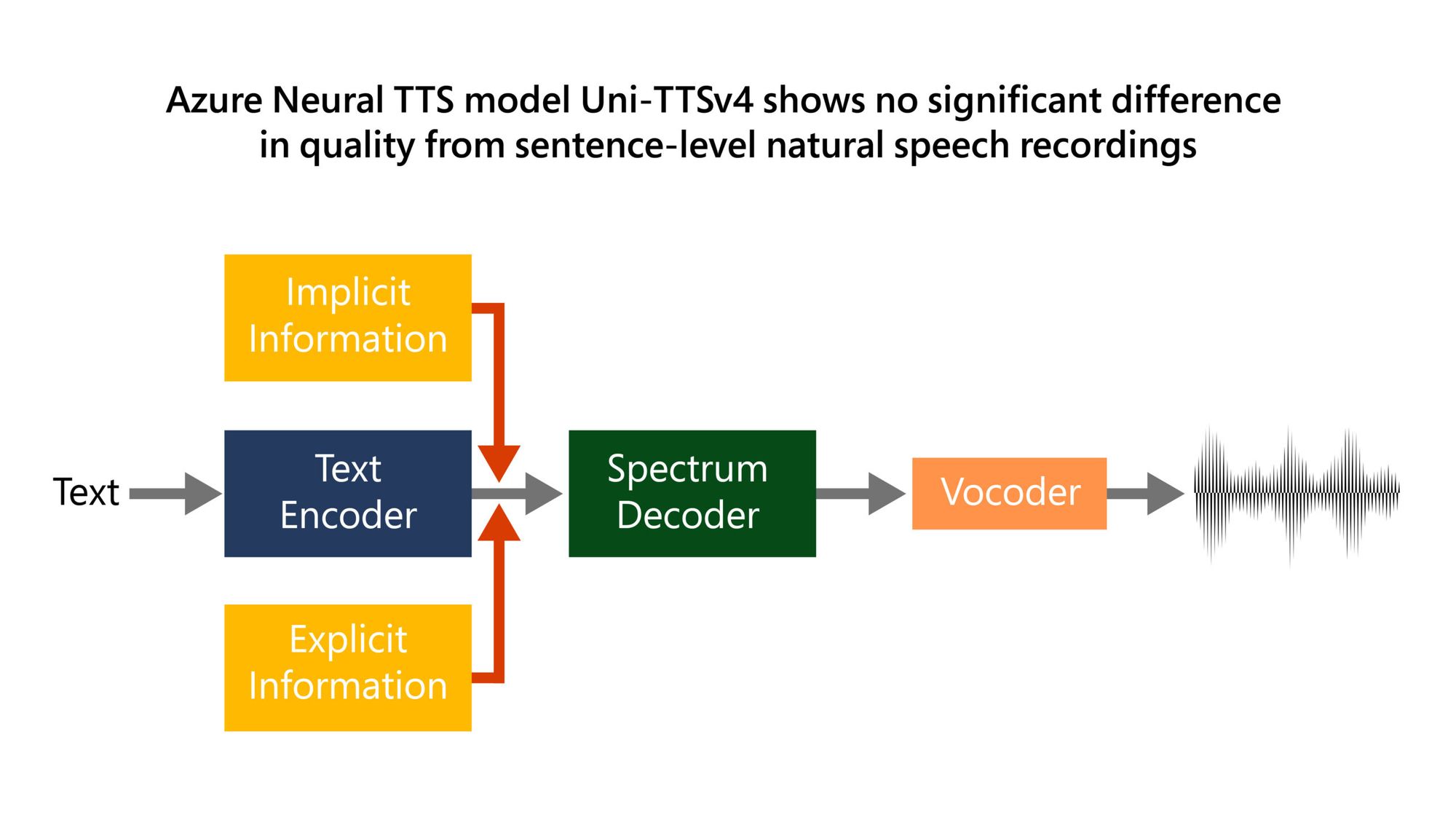Exploring Neural TTS: Navigating the New Wave of Speech Synthesis Technology

Mastering Neural Text-to-Speech Synthesis: A Comprehensive Guide
The surge of interest in neural text-to-speech (TTS) synthesis reflects a confluence of advancements in artificial intelligence (AI), particularly within the realms of machine learning and neural networks. These technologies have redefined the capabilities of TTS systems, empowering them to produce speech that is not only more lifelike but also adaptable to a myriad of human speech variations. For professionals immersed in TTS API usage and development, such as university research scientists and software engineers well-versed in Python, Java, and Javascript, the guide provided by Xu Tan in his seminal work "Neural Text-to-Speech Synthesis" becomes an indispensable resource. It delineates the progress in neural TTS, mapping out a meticulous journey from theory to practical implementation—catering to the quest for depth and precision in speech synthesis that defines the current innovations in the field.
In this rapidly progressing domain, such guidance is particularly crucial. It enables this specialized cohort to navigate the intricacies of neural TTS, tackling the challenges posed by the need for naturalistic outputs and the nuances of language that AI strives to replicate. As neural networks continue to evolve, so too does the potential for creating speech synthesis systems that not only converse but also convey emotion and subtleties, marking a significant leap from the synthetic voices of the past. Xu Tan’s guide serves as both a foundational text for new entrants and a strategic tome for seasoned professionals aiming to harness the full scope of neural TTS for their innovative projects and cutting-edge applications.
| Topics | Discussions |
|---|---|
| Unlocking the Potentials of Neural Text-to-Speech Synthesis | An introductory examination of how neural networks are being utilized in the development of advanced TTS systems, offering more natural and expressive speech than ever before. |
| Neural Text-to-Speech Synthesis: Xu Tan's Pioneering Contribution | Overview of Xu Tan's comprehensive exploration into neural TTS, detailing the process and providing guidance for implementing TTS in both research and product development. |
| Advancing with AI in Speech Synthesis | Insights into how AI advancements, particularly in deep learning, are driving the evolution of TTS, making synthesized speech more accessible and life-like. |
| Breakthroughs in Speech Technology | Exploring the cutting-edge breakthroughs in neural speech synthesis and their wide-ranging implications for the future of human-computer interaction. |
| Common Questions Re: Neural TTS | Answers to common questions regarding the basics of neural speech synthesis, the advantages over traditional TTS, and how AI is integral to the text-to-speech process. |
Unlocking the Potentials of Neural Text-to-Speech Synthesis
Venturing into the intricacies of neural TTS entails familiarization with a specialized set of terminologies that are pivotal in grasping the depth and breadth of this technology. For experts in the field, these terms illuminate the pathway from fundamental concepts to complex applications of neural TTS. Below is a curated glossary of critical terms, each a building block in the architecture of advanced speech synthesis, aimed at enhancing comprehension and sparking innovation among researchers and engineers.
| Term | Definition |
|---|---|
| Neural TTS | Text-to-speech systems that utilize neural network models to generate human-like speech, often delivering more nuanced and dynamic output. |
| Artificial Intelligence (AI) | The simulation of human intelligence by machines, particularly computers, encompassing learning, reasoning, and self-correction. |
| Machine Learning | A subset of AI focused on the idea that systems can learn from data, identify patterns, and make decisions with minimal human intervention. |
| Deep Learning | An advanced machine learning technique involving neural networks with many layers (deep neural networks), enabling the modeling of complex data. |
| Neural Networks | Networks of algorithms structured similarly to the human brain, designed to recognize patterns and interpret sensory data. |
| Speech Synthesis | The artificial production of human speech, which can be generated from text (TTS) or mimic the human voice (voice cloning). |
| Natural Language Processing (NLP) | A field at the intersection of computer science, artificial intelligence, and linguistics concerned with the interactions between computers and human language. |
| API (Application Programming Interface) | A set of routines, protocols, and tools for building software applications, specifying how software components should interact. |

Neural Text-to-Speech Synthesis: Xu Tan's Pioneering Contribution
Xu Tan's "Neural Text-to-Speech Synthesis," published in 2023, serves as a comprehensive guide to the underpinnings and practical applications of neural TTS. It delineates the complete lifecycle of TTS technology from foundational concepts to deployment. The book stands out for its exploration into the deep learning algorithms that are pivotal in sculpting synthesized speech that mirrors human-like quality and fluidity. Readers with a command in TTS development, and programming languages such as Python, Java, and Javascript, will find Xu Tan's elucidation of the neural TTS framework invaluable as they navigate the complexities of this rapidly advancing field.
Through this publication, Xu Tan, a reputable figure in the AI community, illuminates the path for implementing sophisticated speech synthesis systems. The book's focus on neural networks, which are intricately woven into the fabric of speech synthesis, showcases how TTS is maturing through AI-led initiatives. The potential to develop products that could serve a broad spectrum of uses across research and commercial spectrums is central to Xu Tan’s narrative. This technical treatise is poised to be a cornerstone reference for university research scientists and software engineers who aspire to leverage neural TTS technologies.
For those involved in the realm of speech technology innovation, this book offers a window to the exciting prospects and foreseeable challenges in the field. By rigorously outlining the technicalities involved in neural TTS systems, Xu Tan equips the reader with the acumen to craft TTS solutions adept at handling intricate and varied speech requirements. As an authoritative resource, "Neural Text-to-Speech Synthesis" beckons a deep understanding of the technology which could inspire groundbreaking TTS applications. For detailed insights on the publication, visit the book’s Springer page here.
Advancing with AI in Speech Synthesis
The advance of AI in speech synthesis marks a transformative epoch wherein the very essence of communication technologies is being redefined. Neural text-to-speech (TTS), bolstered by the sophisticated mechanics of AI, exemplifies this revolution. Deep learning, a pivotal subset of AI, has imbued speech synthesis with an unprecedented level of naturalness by tapping into vast neural networks designed to emulate the complex patterns of human speech. As AI continues to progress, the frontier for what is achievable in speech synthesis extends, promising more personable and variegated interactions between humans and machine interfaces.
Xu Tan’s contribution through his book lays down a framework that elucidates the intricate synergy between AI and neural networks in achieving these feats. It is a dive into the mechanisms at play, from the initial input of textual data to the nuanced articulation that these AI-driven systems are capable of producing. The neural TTS models profiled are not static; they learn and evolve, capturing the subtleties of emotion and expression that were previously the domain of human speakers alone. This aspect is particularly riveting for TTS developers striving to create applications with a responsiveness that matches the warmth and diversity of human interaction.
The integration of AI in TTS isn't solely an academic endeavor; it has practical implications across industries. Automated customer service, assistive technologies for individuals with disabilities, and interactive entertainment are but a few of the realms where neural TTS makes its mark. The constant advancements serve as a beacon for research scientists and engineers, guiding them towards constructing systems that not only speak but also resonate with clarity and empathic communication.
Breakthroughs in Speech Technology
Unreal Speech's innovative text-to-speech synthesis API is poised to be a game-changer in the speech technology landscape, boasting up to 90% cost reduction compared to leading competitors. For academic researchers in the field of speech synthesis and language processing, this presents an exceptional opportunity to conduct extensive research without the financial burden previously associated with TTS technologies.
Software engineers and developers can benefit immensely, as Unreal Speech's API facilitates the easy integration of high-quality speech synthesis into applications at a fraction of the cost. The affordability and scalability offered by Unreal Speech enable a broader scope for innovation and development, particularly in resource-intensive projects that require processing large volumes of text data.
Game developers and educators, often working with significant audio content requirements, are equipped to create more immersive and interactive experiences. With features like real-time audio streaming, support for an extensive range of characters, and volume discounts, Unreal Speech extends the frontier of what is achievable in educational tech and gaming. Moreover, the anticipated expansion to multilingual support broadens the horizon for global application development.
Common Questions Re: Neural TTS
The Fundamentals of Neural Speech Synthesis
Neural speech synthesis taps into the realm of neural network-driven processes to create lifelike and articulate speech output. By employing complex models that learn from vast datasets, neural TTS replicates the subtleties found in natural human speech, such as intonation, stress, and rhythm.
Neural TTS vs. Standard TTS: Understanding the Differences
Comparatively, neural TTS systems represent a significant leap forward from standard TTS technologies. While traditional TTS might string together prerecorded sounds to form speech, neural TTS harnesses deep learning algorithms to dynamically generate speech in a way that is smoother and more expressive, closely imitating natural human speech patterns.
AI-Powered Text to Speech: How Does It Work?
The intertwining of AI with TTS has been pivotal, turning a once flat and robotic output into speech that's rich and engaging. AI in TTS systems comprehends nuanced linguistic patterns and generates speech output that not only sounds but also feels like a natural extension of human expression.